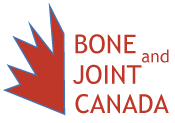
Back pain is a common problem among adults affecting up to 80% of people at least once in their lifetime. The pain can lead to significant loss of function resulting in individuals being unable to complete their normal daily activities including work.
The spine is complex and extremely difficult to accurately diagnose therefore individuals often seeks help from a primary care provider such as the primary care physician, chiropractor, physiotherapist or nurse practitioner from whom they access a very broad range of interventions. There is little information about the effectiveness of these interventions leading to confusion and frustration. Back pain is also often recurrent and chronic for which there are few recommendations on treatment. This results in referrals for imaging such as for CT and MRI scans which often results in wait times and are not useful in identifying the cause of the pain and will not result in improvements to the pain for the majority of people. Many patients are also referred to see a spine surgeon for which there is an extensive waiting time and yet for the vast majority of patients surgery is not an option. These ineffective management strategies can result in prolonged use of prescription medication and dependency on treatment.
In Canada, the cost of medical expenditures alone for low back pain are estimated between $6 and $12 billion annually with additional costs associated with the impact on society due to the loss in worker productivity from time off work and the associated disability payments.
In order to address these unnecessary management strategies and improve access and care for people with low back pain there are a number of provinces that, over the last few years, have developed innovative models of care for the management of low back pain. These models include information for primary care, access to experts for the assessment of complex and chronic low back pain, support networks and patient education. BJC has being working with the provinces to learn about their programs and has been undertaking the development of a national framework that focuses on patient care by primary care providers to guide their assessment and management of patients and includes:
- Primary care provider education on best practices in the management of low back pain
- Practice support networks that link primary care providers to experts and specialists to assist in answering questions and providing advice
- Patient education to assist in messaging and self management
- Multidisciplinary clinics and triage professionals, including physiotherapists, chiropractors and nurses who have undergone additional training to assess complex patients and assist the primary care provider in decision making on care options including medication and surgery
Bone and Joint Canada also wants to acknowledge the partnership with the Canadian Spine Society, Canadian Physiotherapy Association, Canadian Chiropractic Association, Canadian Orthopaedic Association and the Centre for Effective Practice in the development of this framework which is now available on this site.
